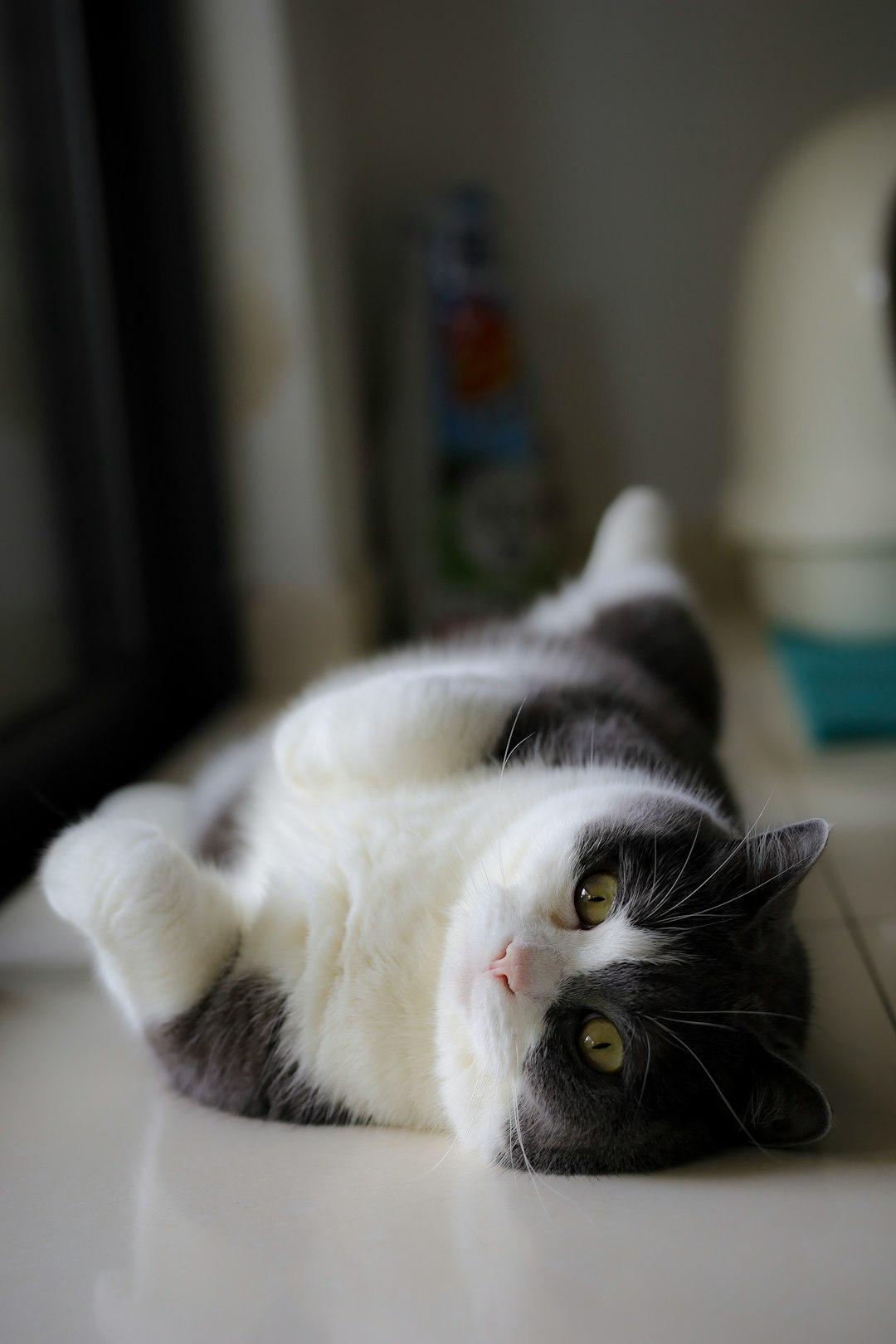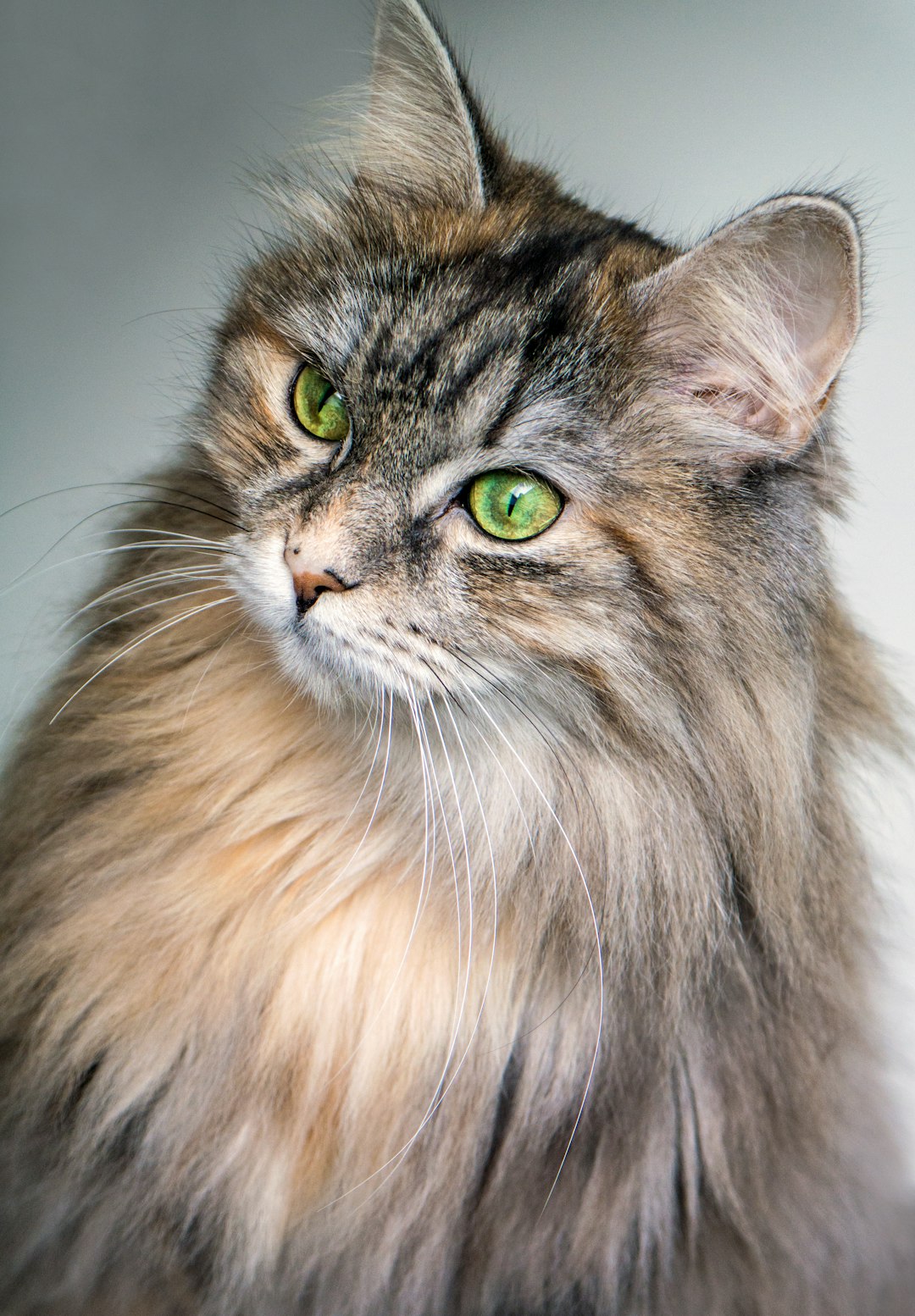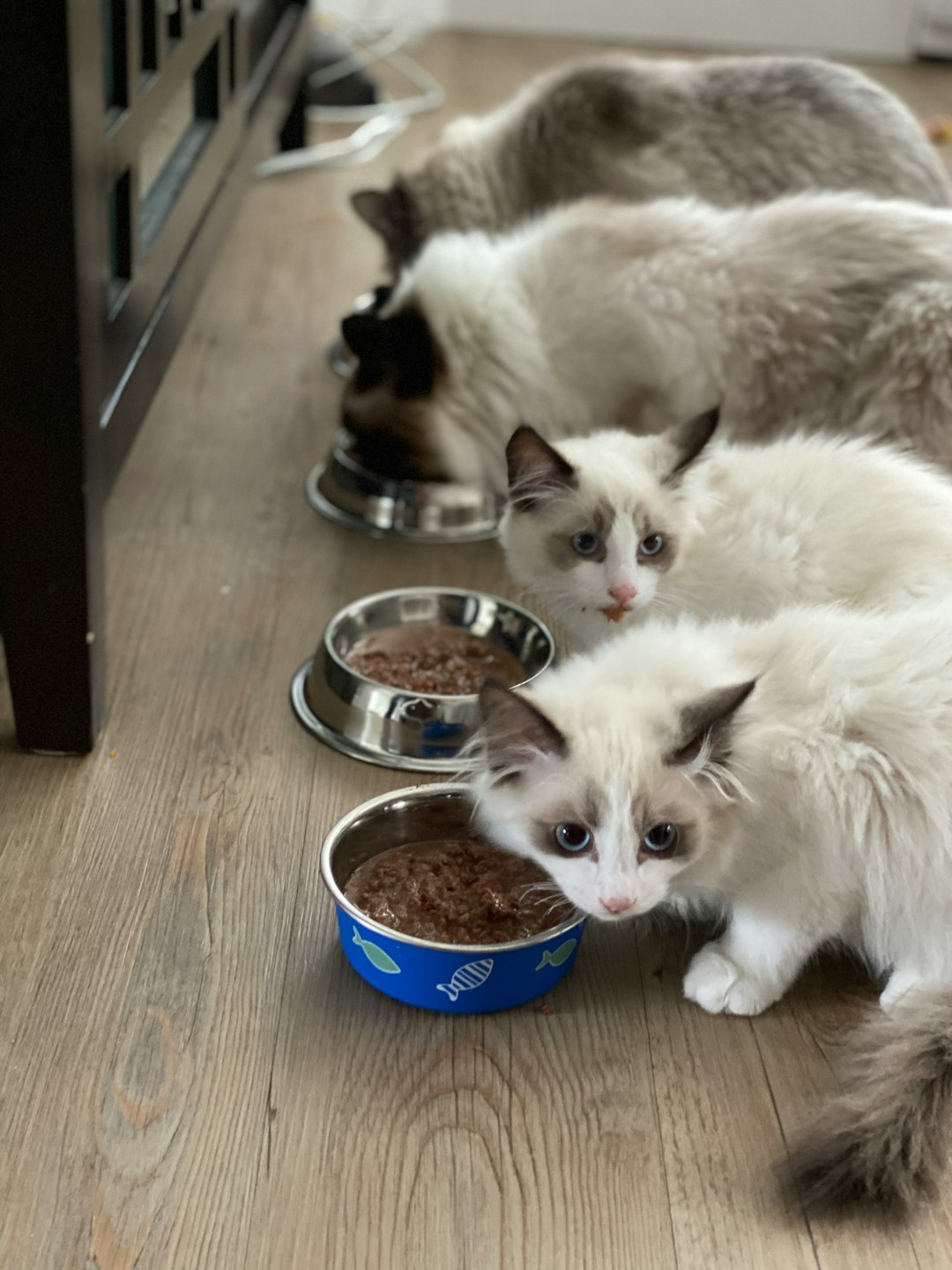As a devoted cat owner, your feline friend’s health and happiness are likely at the forefront of your mind. However, recognizing when something is amiss can be challenging, especially since cats are adept at hiding discomfort. This is why understanding the Signs of bad cat health is crucial. From changes in appetite and thirst to subtle shifts in behavior, your pet may exhibit a variety of symptoms that warrant your attention. By being observant and informed, you can identify potential health concerns early on and seek the necessary veterinary care to ensure your beloved companion remains vibrant and thriving. In this post, we will explore essential warning signs that every cat owner should monitor closely.
Changes in Appetite and Thirst
Recognizing signs of bad cat health often begins with observing changes in your feline friend’s appetite and thirst. These alterations can signal underlying health issues and should never be overlooked.
Increased or Decreased Appetite
An increase or decrease in a cat’s appetite can indicate various health problems. For instance, a sudden spike in food consumption may suggest conditions such as hyperthyroidism or diabetes, while a decrease could be linked to dental diseases or gastrointestinal issues.
| Condition | Increased Appetite | Decreased Appetite |
|---|---|---|
| Hyperthyroidism | Yes | No |
| Diabetes | Yes | No |
| Dental Disease | No | Yes |
| Gastrointestinal Issues | No | Yes |
Unusual Thirst Levels
Like changes in appetite, fluctuations in thirst are also critical indicators of bad cat health. Increased thirst (polydipsia) often accompanies medical conditions like kidney disease or diabetes, while decreased thirst (hypodipsia) might suggest hydration issues or illness.
| Condition | Increased Thirst | Decreased Thirst |
|---|---|---|
| Kidney Disease | Yes | No |
| Diabetes | Yes | No |
| Hypercalcemia | Yes | No |
| Kidney Failure | No | Yes |
Importance of Monitoring Eating Habits
Regularly monitoring your cat’s eating and drinking patterns is crucial. Simple changes can be a precursor to more serious issues. Keeping a record of their habits can help veterinarians diagnose and treat any problems effectively. If you notice significant alterations in their appetite or thirst, don’t hesitate to consult a veterinarian for further evaluation.
Physical Signs to Watch For
Understanding signs of bad cat health involves keen observation of your feline friend’s physical condition. Changes in your cat’s appearance can often be the first indication of underlying health issues. Below are specific signs to monitor:
Changes in Coat Condition
A cat’s coat is often a reflection of its overall health. Look out for:
- Dull or brittle fur: This may indicate nutritional deficiencies.
- Excessive shedding or bald patches: These could be symptoms of allergies or parasites.
| Coat Condition | Possible Issues |
|---|---|
| Dull fur | Nutritional deficiencies |
| Excessive shedding | Allergies, stress, or parasites |
| Bald patches | Skin infections or hormonal imbalances |
Weight Loss or Gain
Significant changes in weight can also be alarming. Monitor your cat’s body condition:
- Weight loss: Often linked to dental issues, hyperthyroidism, or diabetes.
- Weight gain: Can lead to obesity, affecting joints and overall health.
| Weight Observation | Potential Health Implications |
|---|---|
| Sudden weight loss | Hyperthyroidism, diabetes or cancer |
| Significant weight gain | Obesity or metabolic syndrome |
Behavioral Changes as Indicators
Sometimes, a change in behavior manifests in physical ways. Notice your cat’s demeanor:
- Hiding or withdrawing: This can suggest pain or illness.
- Increased aggression or agitation: Often linked to stress or discomfort.
| Behavioral Changes | Possible Health & Emotional Concerns |
|---|---|
| Withdrawal from interaction | Pain, illness, or depression |
| Increased aggression | Fear, stress, or discomfort |
By staying vigilant of these signs of bad cat health, you can take action early and ensure a healthier, happier life for your cat. Regularly evaluate your cat’s coat, weight, and behavior to catch any potential issues before they become severe.
Lethargy and Changes in Energy Levels
Understanding Normal Cat Activity Levels
Cats are naturally playful and curious creatures, requiring regular stimulation and activity throughout the day. A healthy cat generally exhibits short bursts of energy followed by periods of rest, playing, and grooming. According to research, adult cats typically spend 12 to 16 hours sleeping, interspersed with active playtime. Understanding this norm is crucial in identifying deviations that may indicate poor health.
Signs of Excessive Fatigue
Recognizing the signs of bad cat health, particularly related to lethargy, is essential for timely intervention. Here are some indicators that your feline may be overly fatigued:
| Signs of Lethargy | What It Could Mean |
|---|---|
| Reduced playfulness | Possible pain or illness |
| Excessive sleeping | Underlying health issues, such as anemia |
| Avoidance of interaction | Stress, anxiety, or depression |
| Difficulty in jumping or walking | Joint or muscular problems |
If your cat suddenly shows a significant drop in energy levels or their typical activity is sustained for an extended period, it may be cause for concern.
When to Seek Veterinary Advice
If you notice any of the above signs of lethargy persisting for more than 24 hours, it’s wise to consult your veterinarian. Sudden changes in energy levels can be symptoms of various conditions, from minor infections to serious underlying diseases such as hyperthyroidism or diabetes. Early assessment can make a significant difference in maintaining your cat’s health and well-being. Always prioritize regular check-ups to ensure they are in optimal shape, as prevention is key!
Frequent Vomiting or Diarrhea
Identifying Normal Digestive Patterns
Understanding your cat’s normal digestive habits is essential to pinpoint any potential issues. A typical cat may vomit occasionally, but consistent vomiting or diarrhea indicates a health concern. Normal bowel movements should occur daily and be firm, while the frequency, consistency, and color of vomit can offer additional insights into your cat’s health.
| Normal Bowel Movement | Characteristics |
|---|---|
| Frequency | 1-2 times a day |
| Consistency | Firm and shaped |
| Color | Brown, with no unusual colors |
Causes of Vomiting and Diarrhea
Various factors can lead to signs of bad cat health, particularly in the context of vomiting and diarrhea. Understanding these causes helps owners respond promptly. Common causes include:
- Dietary Indiscretion: Cats may eat something harmful or inappropriate.
- Infections: Bacterial, viral, or parasitic infections can upset their digestive system.
- Chronic Illnesses: Conditions like kidney disease, hyperthyroidism, or gastrointestinal disorders can present these symptoms.
When These Symptoms Become Concerning
While occasional vomiting or diarrhea may not be alarming, certain factors indicate a need for veterinary attention. Consider these scenarios:
| Warning Signs | Action Required |
|---|---|
| Symptoms persistent for more than 24 hours | Immediate vet visit needed |
| Vomiting contains blood or is bile-colored | Seek veterinary assistance urgently |
| Vomiting or diarrhea accompanied by lethargy or lack of appetite | Schedule a check-up as soon as possible |
If you notice any of these signs of bad cat health, do not hesitate to seek professional advice from your veterinarian, as timely intervention can significantly improve your cat’s well-being.
Respiratory Issues and Coughing
Signs of Respiratory Distress
Recognizing respiratory issues in your cat can be critical for their health. Signs of bad cat health may include:
| Symptom | Description |
|---|---|
| Rapid Breathing | Breathing faster than normal, even at rest. |
| Open-Mouth Breathing | Breathing with the mouth open, indicating distress. |
| Wheezing | A high-pitched sound during exhalation. |
| Cyanosis | A bluish tint to the gums or tongue. |
If you notice any of these symptoms, it is essential to monitor your pet closely.
Understanding Labored Breathing
Labored breathing, or dyspnea, is a serious indicator of respiratory problems. Cats typically have a respiratory rate of 20 to 30 breaths per minute at rest. If their rate exceeds this, or if they inhale sharply, they may require immediate veterinary attention.
Common Causes of Coughing in Cats
Coughing can be an alarm signal. Various factors may contribute to this condition, such as:
| Cause | Description |
|---|---|
| Allergies | Can cause irritation leading to coughs. |
| Infections | Viral or bacterial infections can affect breathing. |
| Asthma | Causes inflammation and narrowing of airways. |
| Lung Disease | Conditions like pneumonia can lead to coughing. |
Each of these conditions demands timely evaluation by a veterinarian to ensure your cat’s health is not compromised. Monitoring their respiratory patterns can provide critical insights into signs of bad cat health and facilitate prompt intervention.
Changes in Bathroom Habits
Frequency of Litter Box Usage
Observing your cat’s litter box usage is crucial in identifying potential health issues. A healthy cat generally uses the litter box consistently, but any deviation can indicate problems. For instance, a sudden increase in frequency might suggest a urinary tract infection, while a decrease can signify dehydration or other health issues.
| Litter Box Usage | Possible Health Issue |
|---|---|
| Increased | Urinary tract infection, diabetes |
| Decreased | Kidney issues, dehydration |
| Inconsistent | Stress, gastrointestinal problems |
Signs of Urinary Issues
Signs of bad cat health related to bathroom habits often center on urinary problems. Look out for these warning signs:
- Straining to urinate: This could point to a blockage or infection, and should be addressed immediately.
- Blood in urine: This symptom is alarming and requires urgent veterinary attention.
- Frequent urination: When cats frequently visit the litter box with little output, it may indicate a serious issue.
Importance of Monitoring Elimination Habits
Monitoring your cat’s elimination habits is vital for their overall health. Keep a regular log of their bathroom behavior, noting any changes in frequency, volume, or consistency.
Taking a proactive approach can help in early detection of issues. Regularly assessing litter box habits aids in understanding potential health concerns, allowing for timely veterinary intervention. Remember, being observant can make a significant difference in your cat’s health and well-being.
Behavioral Changes and Stress Indicators
Cats are sensitive creatures, and changes in their behavior can be some of the first signs of bad cat health. Recognizing these indicators early can help you identify underlying issues and seek appropriate veterinary assistance.
Uncharacteristic Aggression or Withdrawal
When a normally social cat becomes aggressive or overly distant, it can be alarming. Common signs include:
| Behavior | Significance |
|---|---|
| Aggressive posturing | May indicate pain or discomfort |
| Avoidance | Suggests fear or anxiety |
| Hiding | Could point to illness or stress |
These changes often signal that your cat is not feeling well or is coping with stress.
Clinginess vs. Isolation
Cats may exhibit clingy behavior or seek solitude in response to stress. Understanding where your cat falls in this spectrum is essential:
| Behavior | Possible Cause |
|---|---|
| Clinginess | Seeking comfort due to anxiety |
| Isolation | Stress or potential illness |
Closely observe your cat for shifts from being a confident explorer to a timid loner or vice versa.
Understanding Stress Triggers
Identifying what causes stress in your cat is vital for promoting their well-being. Common triggers include:
- Changes in environment: New furniture or moving homes can unsettle your cat.
- Loud noises: Thunderstorms or fireworks might provoke anxiety.
- New pets or visitors: Introductions can be stressful for sensitive cats.
By being attentive to these signs of bad cat health, you can create a nurturing environment and consult a veterinarian when needed.
Dental Health and Oral Issues
Signs of Dental Disease
Maintaining your cat’s dental health is crucial for their overall well-being. Signs of bad cat health can often originate from dental issues, such as plaque buildup and gum disease. Watch for these warning signs:
| Signs | Description |
|---|---|
| Bad breath | Persistent foul odor can indicate infection. |
| Red or swollen gums | Inflammation may signal periodontal disease. |
| Difficulty eating | Reluctance to chew or eat hard food. |
| Excessive drooling | Increased saliva production can indicate pain. |
Importance of Regular Dental Check-ups
Regular veterinary dental check-ups are essential in preventing serious oral problems. Not only do these appointments help identify issues early, but they also play a significant role in your cat’s overall health:
| Benefits of Check-ups | Details |
|---|---|
| Early detection | Catching dental disease before it worsens. |
| Professional cleaning | Removing plaque and tartar buildup. |
| Prevents systemic issues | Oral health problems can impact organ systems. |
Recognizing Signs of Pain or Discomfort
Cats are notorious for hiding pain, but certain behaviors can signal discomfort related to dental issues:
| Behaviors | Indications |
|---|---|
| Pawing at the mouth | Indicates pain or discomfort. |
| Changes in grooming habits | May avoid grooming due to oral pain. |
| Increased aggression or withdrawal | Can be a sign of distress and pain. |
By being vigilant about your cat’s dental health, you can catch signs of bad cat health early on and ensure they receive the necessary treatment.
Skin Conditions and Allergies
Common Skin Issues in Cats
Cats can suffer from various skin conditions that may indicate signs of bad cat health. Common issues include:
| Condition | Description |
|---|---|
| Fleas/Ticks | External parasites that cause itching and irritation. |
| Dermatitis | Inflammation of the skin, often due to allergens. |
| Ringworm | A fungal infection resulting in circular patches of hair loss. |
| Hot Spots | Localized areas of inflammation and infection. |
| Seborrhea | Abnormal flaking or oiliness of the skin. |
Identifying Allergic Reactions
Allergies in cats can manifest through various skin reactions. Some symptoms to look for include:
- Itching: Frequent scratching or grooming.
- Redness: Irritated or inflamed areas of skin.
- Swelling: Areas that appear swollen or puffy.
- Hair Loss: Noticeable thinning or bald patches.
In cats, allergies may stem from food, environmental allergens, or insect bites. If you suspect your cat is experiencing an allergic reaction, it’s essential to monitor their symptoms closely.
When to Consult a Veterinarian
You should seek veterinary assistance if you notice persistent symptoms or significant changes. Consider the following warning signs:
| Symptoms | Action |
|---|---|
| Severe Itchiness | Causes distress or disrupts daily life. |
| Persistent Skin Problems | Lasting more than a few days. |
| Secondary Infections | Signs of pus, redness, or swelling. |
Understanding these signs of bad cat health can help you intervene early, ensuring your feline friend receives appropriate care and treatment for their skin issues and allergies.
Regular Veterinary Check-ups
Importance of Routine Health Assessments
Regular veterinary check-ups are crucial for maintaining optimal cat health. Frequent visits allow veterinarians to assess your cat’s overall health, catch potential problems early, and administer treatments as necessary. A typical check-up involves a thorough physical examination, which evaluates vital signs, weight, and physical condition. Consistent assessments can lead to better long-term health outcomes and increased life expectancy for your feline friend.
Vaccination and Preventative Care
Vaccinations play a significant role in preventing illness in cats. During health check-ups, veterinarians update vaccines based on your cat’s age and health history. Additionally, preventative care measures—such as parasite control and dental cleanings—can also be coordinated during these visits. Keeping your cat’s vaccinations current not only protects them but also helps prevent the spread of diseases within the community.
Recognizing the Signs of Bad Cat Health Early
One of the primary advantages of regular veterinary visits is the ability to spot early signs of bad cat health. By addressing issues before they escalate, you can minimize discomfort for your pet and potentially reduce expensive treatments later on. Check-ups offer a platform for discussing any behavioral changes, appetite fluctuations, or other concerns you might have observed at home. Remember, early intervention is key in ensuring your cat remains happy and healthy.
| Key Elements of Regular Check-ups | Benefits |
|---|---|
| Physical Examination | Early detection of health issues |
| Vaccination Updates | Protection against serious diseases |
| Discussion of Behavioral Changes | Improved understanding of their needs |
| Dental Health Assessment | Prevention of oral issues |
| Nutritional Guidance | Tailored diet for optimal health |
Frequently Asked Questions
What are some common signs indicating my cat might be unhealthy?
Common signs of poor cat health include changes in appetite, such as eating less or refusing food altogether; excessive weight loss or gain; lethargy or decreased activity levels; vomiting or diarrhea; and changes in bathroom habits, such as urinating outside the litter box. Additionally, if your cat displays unusual behaviors like hiding or aggression, or if you notice any lumps or sores on their body, these could also indicate health concerns that warrant a visit to the veterinarian.
How often should I take my cat to the veterinarian for check-ups?
Cats should have regular veterinary check-ups at least once a year, especially as they age. During these visits, the veterinarian will conduct a thorough examination, possibly run blood tests, and provide vaccinations. For senior cats or those with existing health issues, more frequent visits—typically every six months—are advisable. Regular check-ups help in early detection of health issues and ensuring your cat remains healthy as they grow older.
What should I do if I notice any warning signs in my cat’s health?
If you observe any warning signs in your cat’s health, it’s crucial to act promptly. Start by documenting the symptoms and any behavioral changes. Then, schedule an appointment with your veterinarian as soon as possible for a thorough examination. Early detection can significantly improve treatment outcomes, and your vet can provide professional advice tailored to your cat’s specific situation. Do not attempt to self-diagnose or treat your cat without consulting a veterinarian.
Are there specific health issues I should be particularly aware of in older cats?
Yes, as cats age, they become more susceptible to various health issues. Common concerns include kidney disease, hyperthyroidism, arthritis, dental problems, and diabetes. Older cats may also experience cognitive dysfunction, which affects their behavior and cognitive abilities. It is essential to watch for symptoms like increased thirst, changes in weight, or mobility issues. Regular veterinary check-ups become increasingly crucial in monitoring and managing these potential health problems.
How can I help maintain my cat’s health and prevent illness?
To maintain your cat’s health and prevent illness, start with a balanced diet appropriate for their age and health status. Regular exercise is vital, so engage them in play to keep them active and prevent obesity. Ensure they have access to fresh water and a clean litter box. Regular veterinary check-ups are essential for vaccinations and health assessments. Additionally, dental care, including brushing their teeth and offering dental treats, can prevent oral diseases. Lastly, be alert to any behavioral changes that may indicate health issues, as early intervention is key.



